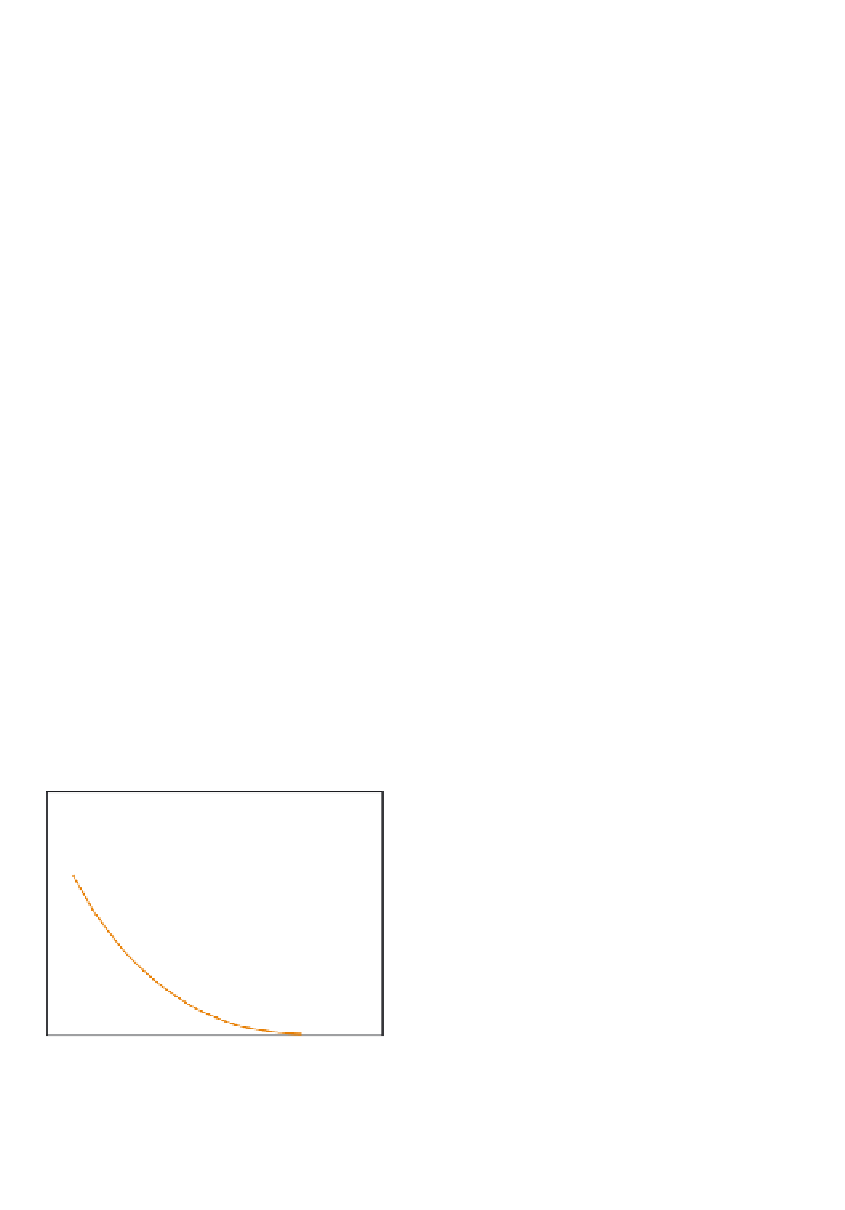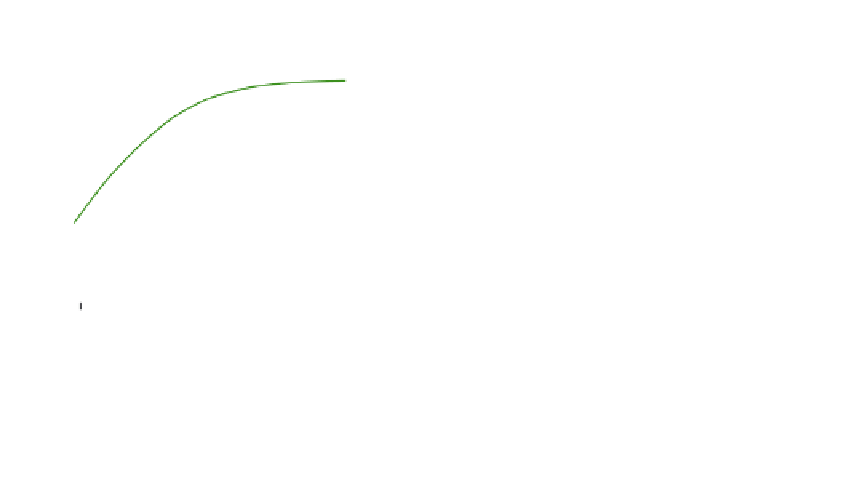Geoscience Reference
In-Depth Information
number of cloud water droplets and increase the
cloud albedo, giving a cooling effect of about
- 0.7W m
-2
.
Figure 3.5
illustrates the relative roles of the
atmosphere, clouds and the earth's surface
in reflecting and absorbing solar radiation at
different latitudes. (A more complete analysis of
the heat budget of the earth-atmosphere system
is given in D, this chapter.)
values, as determined by satellites, aircraft and
surface measurements, are summarized in
Table
3.2
(see Note 2).
It should be noted that the albedo (
α
) is
defined by the ratio of reflected radiation (S
↑
) to
the incoming radiation (S
) received at the top of
the atmosphere, at the cloud top, at the top of the
vegetation canopy, or at the ground surface:
↓
α
= S
↑
/S
↓
, expressed as a fraction or percent.
The total (or global) solar radiation received at
the surface on cloudy days is
3 Effect of cloud cover
Thick and continuous cloud cover forms a
significant barrier to the penetration of radiation.
The drop in surface temperature often experi-
enced on a sunny day when a cloud temporarily
cuts off the direct solar radiation illustrates our
reliance upon the sun's radiant energy. How much
radiation is actually reflected by clouds depends
on the amount of cloud cover and its thickness
(
Figure 3.6
). The proportion of incident radiation
that is reflected is termed the
albedo
, or reflection
coefficient (expressed as a fraction or percentage).
Cloud type affects the albedo. Aircraft measure-
ments show that the albedo of a complete overcast
ranges from 44 to 50 percent for cirrostratus to
90 percent for cumulonimbus. Average albedo
S= S
0
[
b
+ (1 -
b
) (1 -
c
)]
where S
0
= global solar radiation for clear skies;
c
= cloudiness (fraction of sky
covered);
b
= a coefficient depending on cloud
type and thickness; and the depth of
atmosphere through which the
radiation must pass.
For mean monthly values for the United States,
b
≈ 0.35, so that
S
≈
S
0
[1 - 0.65
c
]
Table 3.2
The average (integrated) fractional
albedo of various surfaces
100
Planet earth
0.31
Global surface
0.14-0.16
80
Global cloud
0.23
Cumulonimbus
0.9
60
Stratocumulus
0.6
Cirrus
0.4-0.5
40
Fresh snow
0.8-0.9
Melting snow
0.4-0.6
20
Sand
0.30-0.35
A
bsor
0
10
Grass, cereal crops
0.18-0.25
20
40 60 100 400
Thickness of cloud (meters)
1000
4000
10000
Deciduous forest
0.15-0.18
Coniferous forest
0.09-0.15
Figure 3.6
Percentage of reflection, absorption
and transmission of solar radiation by cloud layers
of different thickness.
Source: From Hewson and Longley (1944).
Tropical rainforest
0.07-0.15
Water bodies*
0.06-0.10
Note: *Increases sharply at low solar angles.



















